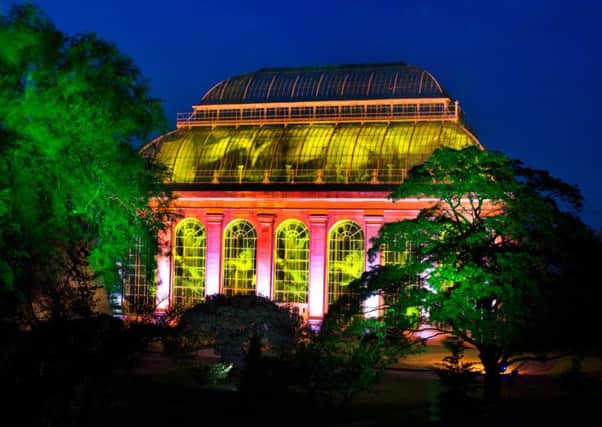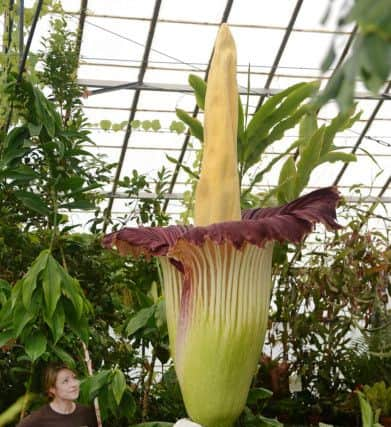Botanic Garden's '˜Corpse Flower' spurs visitor boom


The Garden saw a 10.2 per cent boom in visitor numbers in 2015 – one of the biggest rises of anywhere in the city in a bumper year that broke tourism records across the Capital.
Only the Scottish National Gallery of Modern Art topped it, with an astonishing 40.6 per cent jump in visitors.
Advertisement
Hide AdAdvertisement
Hide AdEdinburgh’s venues and sites enjoyed a 3.9 per cent rise in footfall overall in 2015.


Gallery bosses said the boost was due to high-profile exhibitions such as The Amazing World of MC Escher – the UK’s first major retrospective of the Dutch artist’s work – and Artists Rooms: Roy Lichtenstein.
In total, there were 457,655 visitors to Modern One and Modern Two on Belford Road, with more than 52,000 flocking through the doors to see the M C Escher exhibition alone.
Meanwhile, staff at the Royal Botanic Garden said residents and tourists alike had been attracted by a “strong summer season” driven by a host of popular events.
Advertisement
Hide AdAdvertisement
Hide AdHeather Jackson, director of enterprise at the Botanics, said: “April, May and June saw us welcoming more than 100,000 visitors each month. We also had a really strong summer season, driven by events such as the first flowering of an Amorphophallus titanum in Scotland and Cake Fest Edinburgh on Midsummer’s Day, as well as our unique autumn ‘Botanic Lights’ event.”


Amorphophallus titanum, the Titan arum – or “New Reekie” as it was dubbed in Edinburgh – is known as the “corpse flower” because of the stench of rotting flesh it emits when in bloom to attract pollinating insects.
The otherworldly plant is native only to the Sumatran rainforest, and has been nurtured in a glasshouse at the Botanic Garden for 12 years.
For just a few days in June last year, tens of thousands of visitors watched in awe as it revealed its 2.8-metre flower and unmistakable stink, sending horticulturists into a frenzy.
Advertisement
Hide AdAdvertisement
Hide AdElsewhere, figures show Edinburgh continues to dominate the top 20 most-visited attractions in Scotland.
Edinburgh Castle remains the country’s tourism hotspot, with more than 1.5 million people making the journey across its drawbridge last year – a year-on-year rise of 5.9 per cent. Hot on its tail was the National Museum of Scotland, with 1,567,310 visitors – a slight fall of 4.4 per cent.
Douglas Walker, chairman of the Association of Scottish Visitor Attractions, said: “After a number of challenging years for the sector, it is clear that visitor attractions are entering what we hope will be a period of sustained growth.
“Edinburgh attractions have excelled once again, by investing in their visitor offer, developing innovative new products and services and launching creative events and exhibitions programmes, all of which are vital for keeping visitors coming back time and again.”